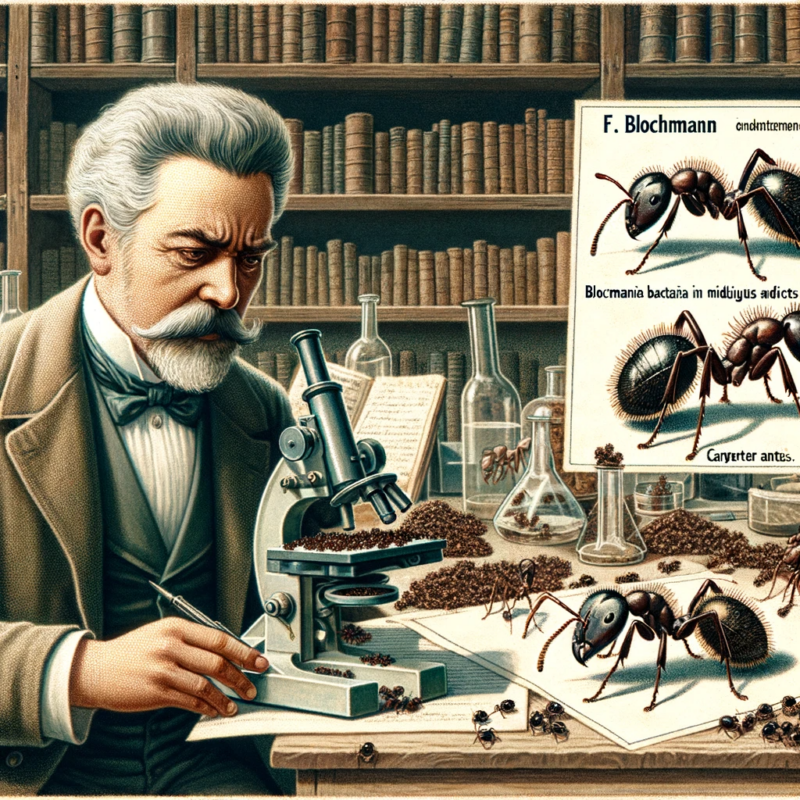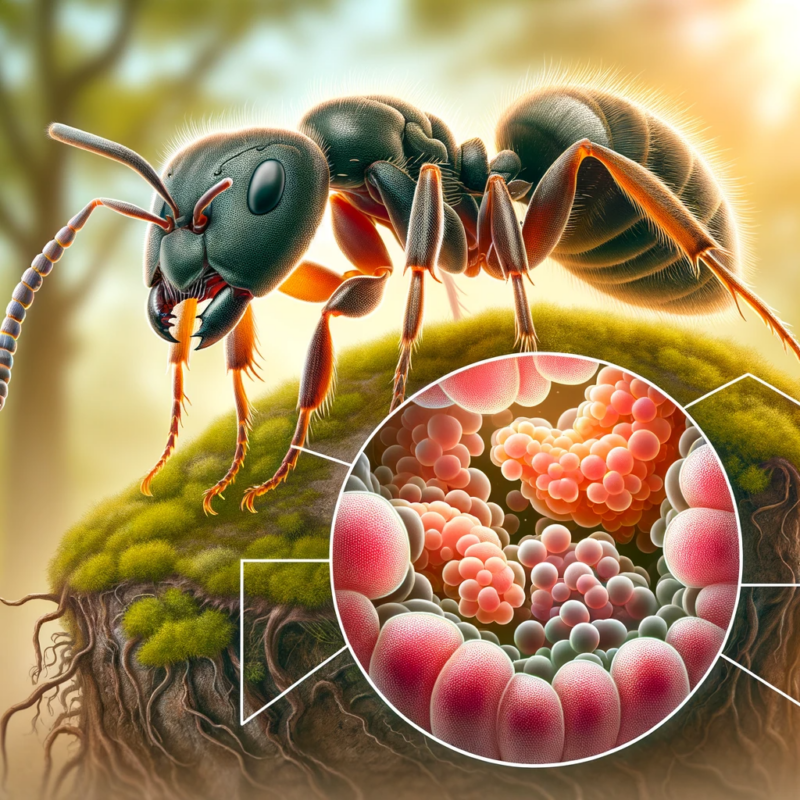懶人包
巨山蟻與布氏菌,為互利共生的關係,布氏菌為巨山蟻提供營養和健康,而巨山蟻則為布氏菌提供食物和生存環境。
然而,布氏菌對溫度非常敏感,氣候變暖可能会對布氏菌造成嚴重威脅,進而影響到巨山蟻的生存和繁榮。
歷史邂逅:來自遠古的合作
早在19世紀80年代,德國動物學家布洛赫曼就發現了,巨山蟻體內存在一種細菌。他將這些細菌命名為「布氏菌」,並認為它們與巨山蟻之間存在某種共生關係。
2000年,科學家們正式將它們,歸類為一個獨立的細菌屬——擬布氏菌屬 (Candidatus Blochmannia)。
**布洛赫曼是德國柏林大學的教授,曾任德國動物學會主席。他是一位多產的學者,一生發表了多篇關於昆蟲的論文。**擬布氏菌屬的學名是基於布洛赫曼的名字而命名的。
布氏菌與巨山蟻的共生關係是一種互利共生的關係,雙方都從這一關係中受益。布氏菌為巨山蟻提供營養和健康,而巨山蟻則為布氏菌提供食物和生存環境。

腸道工廠:為蟻群提供營養和健康
布氏菌主要生活在巨山蟻的中腸和雌蟻的卵巢中。
它們就像微型工廠,可以合成多種氨基酸,包括對蟻群至關重要的酪氨酸、色氨酸、賴氨酸等,並幫助螞蟻分解處理氮元素。
通過這些功能,布氏菌提升了螞蟻的營養等級,進而促進蟻群的整體健康。
**酪氨酸是合成蛋白質、激素和色素等物質的重要原料。它是巨山蟻體內多種激素和色素的重要組成部分。
**色氨酸是合成褪黑激素的重要原料。褪黑激素是一種調節生物鐘的激素,在巨山蟻的睡眠、繁殖等方面發揮著重要作用。
**賴氨酸是合成蛋白質、酶和抗體等物質的重要原料。它是巨山蟻體內多種酶和抗體的重要組成部分。

蟻群健康的關鍵:交哺
科學家Zientz等人的研究發現,布氏菌的貢獻,主要通過工蟻的「反哺」系統來實現。
工蟻將攜帶布氏菌的食物運送到巢穴,與其他螞蟻分享,從而使整個蟻群受益。
通過對比使用抗生素減少布氏菌數量的蟻群,和未經處理的蟻群,研究人員發現,擁有布氏菌的蟻群整體健康狀況明顯更佳。
Zientz認為,這可能是因为布氏菌,提高了工蟻提供給幼蟲食物的營養價值,而隨著螞蟻的成熟,布氏菌的影響會逐漸減弱。
**相互哺育和反芻是巨山蟻的一種獨特行為。工蟻會將自己獲得的食物吐出,讓其他螞蟻食用。
**幼蟲是巨山蟻群體中最脆弱的成员,它們對營養的需求非常高。工蟻通過相互哺育和反芻,將營養物質從成年螞蟻傳遞給幼蟲,從而為幼蟲的生長發育提供保障。

氣候變化的隱憂:脆弱的共生關係
值得關注的是,布氏菌對溫度非常敏感。研究人員Fan和Wernegreen進行了一項實驗,將巨山蟻置於37.7°C的環境中4周,結果發現超過99%的布氏菌消失。
即使經過16周,也僅剩少量殘存。這一發現引發了人們的擔憂:氣候變暖可能会對布氏菌造成嚴重威脅,進而影響到巨山蟻的生存和繁榮。
**氣候變暖可能会導致全球平均氣溫上升。溫度的升高會對布氏菌的生存造成不利影響。
**氣候變化是人類活動造成的全球性問題。
結語
布氏菌的故事不僅揭示了自然界中令人驚嘆的共生關係,也提醒我們關注氣候變化對微生物世界的潛在影響。
